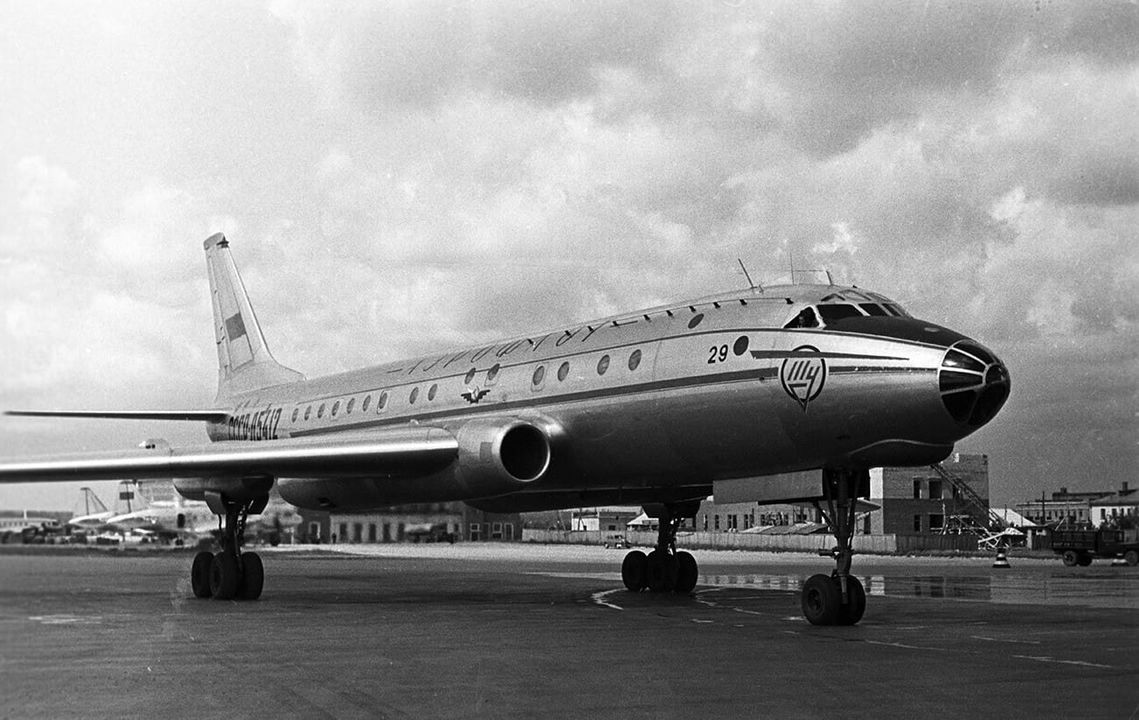That Time the Soviets Made an Airliner Out of a Bomber

And it became famous for all the wrong reasons.
The Soviet Race to Develop a Passenger Jet
Now as the Cold War was getting into gear in the 1950s, the Soviets wanted every chance they could get to one-up the West. By this period in time, air travel was exploding and Britain made history by developing the first commercial jet liner in the de Havilland. Not wanting to be left behind, the USSR wanted to outdo de Havilland and develop their own, better passenger jet.

But the Soviet civil aviation industry was underdeveloped when compared to what existed in the West. In fact, one of the most used passenger planes in the USSR was actually a licensed copy of the Douglas DC-3/C-47, the Lisunov Li-2. They really did not have that much experience in building passenger planes from scratch.
Introducing the Andrei Tupolev’s Tu-104
But then came a guy by the name of Andrei Tupolev (you may have heard of him) and he approached the government with the claim that his company could deliver a modern jet liner in 3 years. To do this, Tupolev took the already existing Tupolev Tu-16 “Badger” design and just gave it a larger body to accommodate 50 passengers. But used the same engines, wings and equipment for everything else and thus, the Tu-104 was created.

Needless to say, the Soviet leadership was over the moon with the aircraft. Even more so when the Comet was grounded for 4 years due to a series of incidents. This left the USSR as the only nation on Earth to have passenger jets in service, a fact Moscow was ready to flaunt in everyone’s face as they used every opportunity to show off “Glorious Soviet Engineering.”
The Challenges of Converting a Bomber into a Passenger Jet
But it soon became clear why it’s never a good idea to use a bomber design for a passenger jet. Pilots of the Tu-104 hated the aircraft, as it was an absolute pig to fly due to sluggish controls and its design made low-speed flights especially challenging. Which, by the way, being able to fly at slow speeds is needed when you want to land any aircraft. But due to the risk of actually stalling out, pilots would be forced to land at much higher speeds. Needless to say, a lot of aircraft were lost by just overshooting the runway.
There was also the fact that the aircraft had a nasty habit of just either shutting down or losing control in flight when experiencing turbulence. Sometimes the Tu-104 would just shoot up in altitude when it experienced an updraft and the pilots would be completely helpless to stop it. This also led to a number of fatal crashes, but just how many is still unknown as this was the USSR and the Tu-104 was “superior” to whatever the West had. But this did not stop the Tu-104 from developing a very bad reputation within the USSR.
The Aftermath and Legacy
Eventually, the government had to admit (to themselves) that the Tu-104 was a dangerous aircraft and modifications were made to fix these issues. But by the time the aircraft returned to service, it was no longer the “best” jetliner in the world. As by 1960, an improved version of the Comet had entered production, while Boeing had revealed the 707 passenger jet, which carried more passengers and had a much better range.
~ NC










